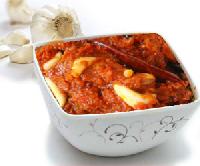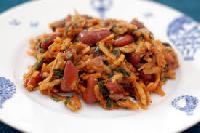Fresh Gherkin
Get Price Quote
1 Container (MOQ)
- Cultivation Type: Organic
- Available Sizes: Fruit count per kg. 5/10, 10/20, 20/30, 30/40, 40/60, 60/120, 120/160, 160/300, and 300+
- How to store?: Store gherkins in plastic or glass bottles and refrigerate.
- Health Benefits: Low in Saturated Fat, and Cholesterol, High in Vitamin K and Vitamin A but also high in Sodium
- Color: Green
- Payment Terms: 50% Advance and Balance 50% after BL Scan Copy
We supply gherkins preserved in
Natural Alcohol Vinegar
Brine
Acetic Acid
Uses of Gherkins
Gherkins are traditionally served cold, as cooked gherkins lose their intense flavor rapidly. Pickled gherkins are served to accompany other foods, often in sandwiches. They are historically associated with Central European and, occasionally, Eastern European cuisine, but are now found more widely.
Sometimes also called a cornichon (the French word for gherkin), they have historically also been called horned cucumbers, true gherkin has palmately lobed leaves with toothed edges, small flowers, and furrowed, prickly fruits about five centimeters (two inches) long that are borne on crooked stalks.Although its fruit is also pickled, the plant is frequently grown only as a curiosity.
Gherkins are grown only in South India, where the ideal soil type and the desirable temperatures of not less than 15 degrees centigrade and not more than 35 degrees Centigrade. These are found mainly in Karnataka, Tamil Nadu and Andhra Pradesh. The climatic conditions which are prevalent throughout the year, render this region ideal to take up three crops of gherkins annually.
Packing
Gherkins in Acetic acid in 220, 240, 260 In food grade, HDPE Barrels
Gherkins in Natural Vinegar in 220, 240, 260 In food grade, HDPE Barrels
Gherkins in Brine in 220, 240, 260 In food grade, HDPE Barrels
Available in Tin, Cans, Barrels and Bottle Jars.
Port of Loading & Supply Capacity
Tuticorin Port
Weekly 5*20 Feet containers supply capacity



